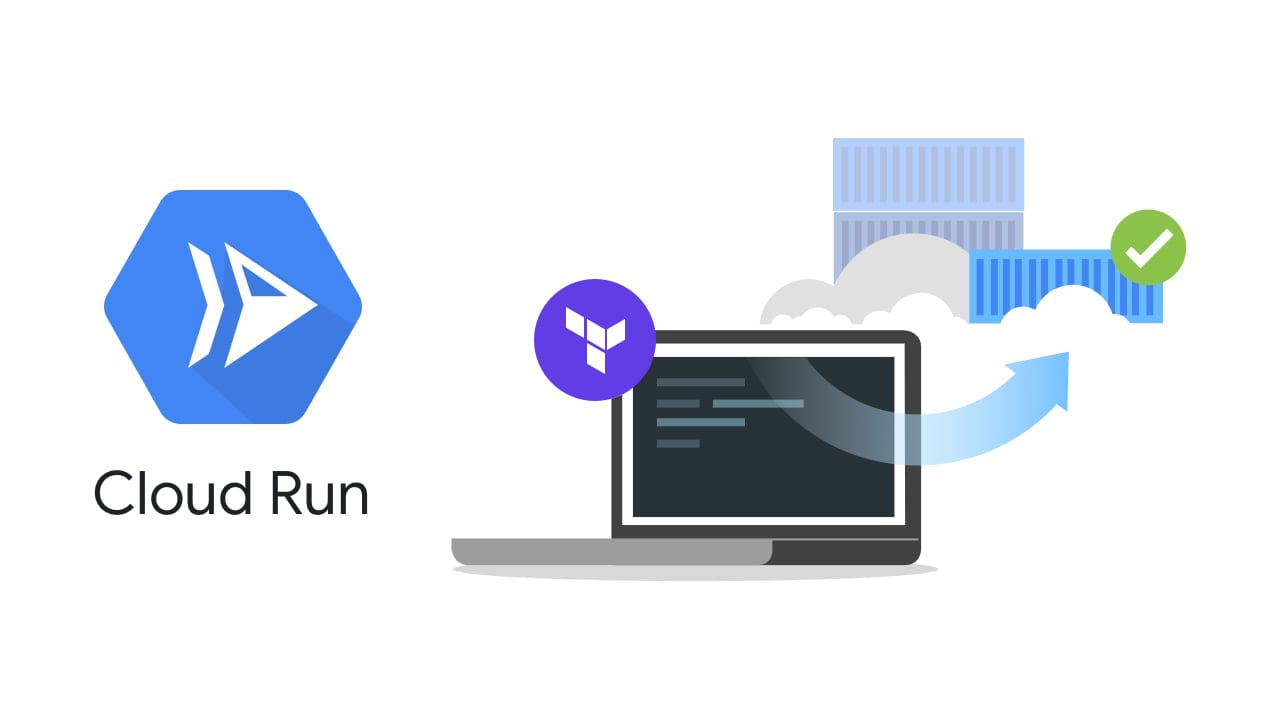Configuring Cloud Run with Terraform

Terraform is a popular tool for managing infrastructure configurations as code, but what if that infrastructure is serverless? Google's Cloud Run is a fully-managed serverless offering that leverages the power and flexibility of containers as a deployment primitive. This post explores how to setup and configure a Cloud Run service using Terraform.
The full sample code for this post is available on GitHub.
Setup
To get started, create a Google Cloud account, install the Cloud SDK, and install Terraform for your device. If you have not already done so, authenticate to the Cloud SDK:
$ gcloud auth application-default login
This will open a browser and prompt a sign in for your Google account. This only needs to be done once per device.
Create a new folder in which to create your Terraform configurations. All future commands will be run from this folder and files will be created in this folder.
$ mkdir terraform-cloud-run-demo
$ cd terraform-cloud-run-demo
Configurations
Create a file named versions.tf that define the version constraints.
terraform {
required_version = ">= 0.12"
required_providers {
google = ">= 3.3"
}
}
This file creates two constraints:
terraform- This is the actual Terraform binary version. We require version 12.0+.google- This is the Google provider for Terraform. We require 3.3+ because Cloud Run support was added in version 3.3.0.
Create a file named main.tf and configure the Google provider stanza:
provider "google" {
project = "YOUR_PROJECT_ID" # replace with your project ID
}
Enable the Cloud Run API. This only needs to be done once per project, but it is an idempotent operation.
resource "google_project_service" "run" {
service = "run.googleapis.com"
}
Create a Cloud Run service named "my-service" in the "us-central1" region. This service deploys a basic hello world container and directs 100% of traffic to this container.
resource "google_cloud_run_service" "my-service" {
name = "my-service"
location = "us-central1"
template {
spec {
containers {
image = "gcr.io/cloudrun/hello"
}
}
}
traffic {
percent = 100
latest_revision = true
}
depends_on = [google_project_service.run]
}
Make the deployed service publicly accessible. Without this configuration, the endpoint will require authentication. For demo purposes, give "allUsers" the ability to invoke the service.
resource "google_cloud_run_service_iam_member" "allUsers" {
service = google_cloud_run_service.my-service.name
location = google_cloud_run_service.my-service.location
role = "roles/run.invoker"
member = "allUsers"
}
Finally, output the URL where the service can be accessed.
output "url" {
value = "${google_cloud_run_service.my-service.status[0].url}"
}
Execute Terraform
Now that the configurations are written, initialize Terraform.
$ terraform init
Next, plan the changes.
$ terraform plan
The output will show the actions Terraform is going to take.
Plan: 3 to add, 0 to change, 0 to destroy.
Now apply the changes. Terraform will automatically handle the order of operations.
$ terraform apply
The output will show the progress and eventually the URL.
google_project_service.run: Creating...
google_project_service.run: Still creating... [10s elapsed]
google_project_service.run: Still creating... [20s elapsed]
google_project_service.run: Still creating... [30s elapsed]
google_project_service.run: Creation complete after 38s [id=project/run.googleapis.com]
google_cloud_run_service.my-service: Creating...
google_cloud_run_service.my-service: Still creating... [10s elapsed]
google_cloud_run_service.my-service: Creation complete after 16s [id=locations/us-central1/namespaces/project/services/my-service]
google_cloud_run_service_iam_member.allUsers: Creating...
google_cloud_run_service_iam_member.allUsers: Creation complete after 6s [id=v1/projects/project/locations/us-central1/services/my-service/roles/run.invoker/allusers]
Apply complete! Resources: 3 added, 0 changed, 0 destroyed.
Outputs:
url = https://my-service-3vyvs7utmq-uc.a.run.app
Invoke the service
Use Terraform outputs to invoke the service.
# In the terminal
$ curl $(terraform output url)
# In the default browser
$ open $(terraform output url)
Tearing it down
One of the beauties of Terraform is its self-contained nature. Even though Cloud Run has a generours free tier and [you only pay when your service is running], some folks want to cleanup things when they are done.
When you are done experimenting, tear everything down with a single Terraform command!
$ terraform destroy
Confirm "yes" at the prompt.
Next steps
This post only beings to scratch the surface of the functionality offered by the google_cloud_run_service resource in Terraform. Check out the Cloud Run Terraform resource documentation for a full list of all arguments and attributes available. You can also learn more about Cloud Run and Cloud Run pricing on the Google Cloud website.
About Seth
Seth Vargo is a Distinguished Software Engineer at Google. Previously he worked at HashiCorp, Chef Software, CustomInk, and some Pittsburgh-based startups. He is the author of Learning Chef and is passionate about reducing inequality in technology. When he is not writing, working on open source, teaching, or speaking at conferences, Seth advises non-profits.
